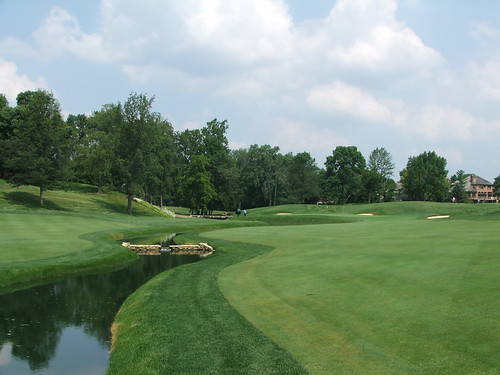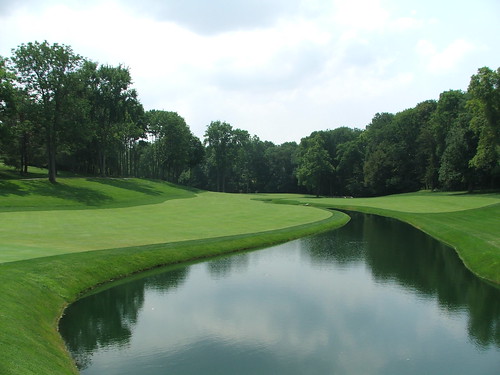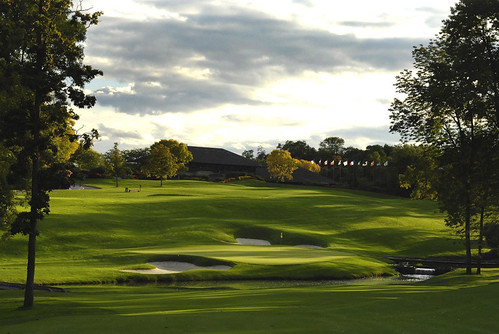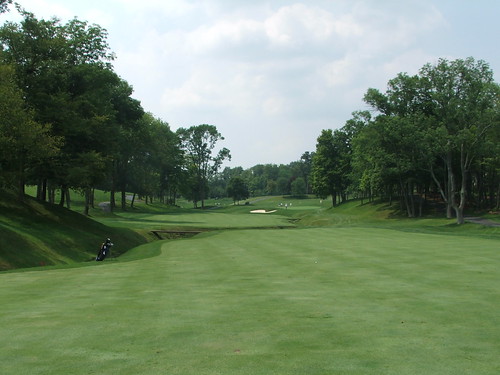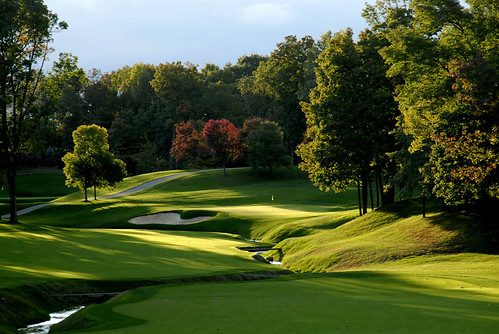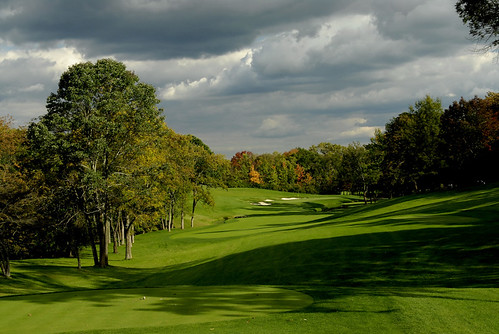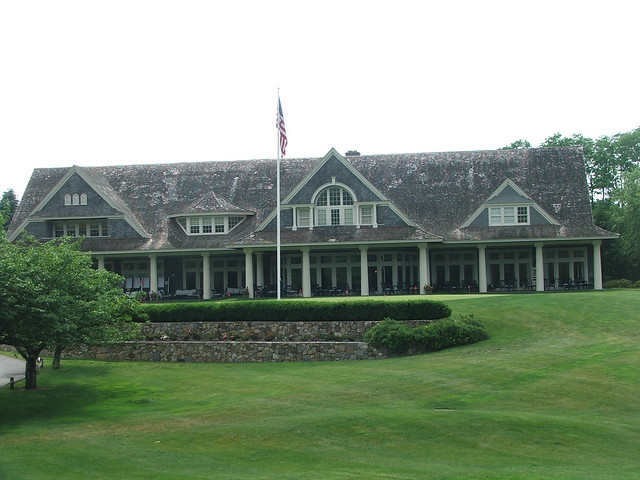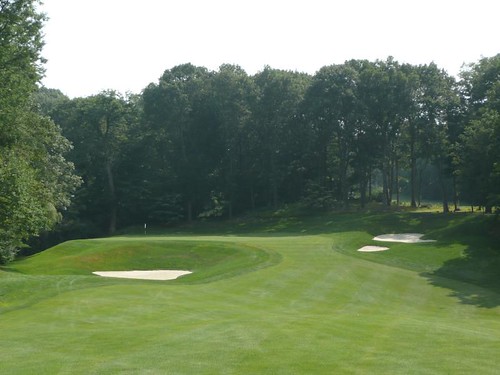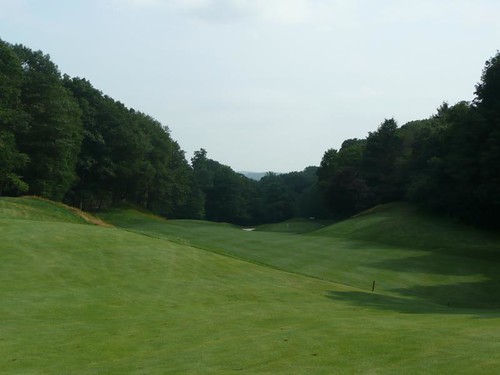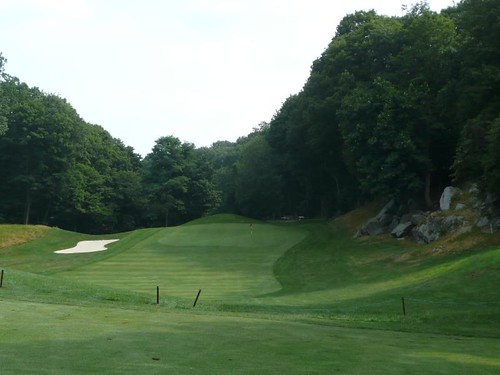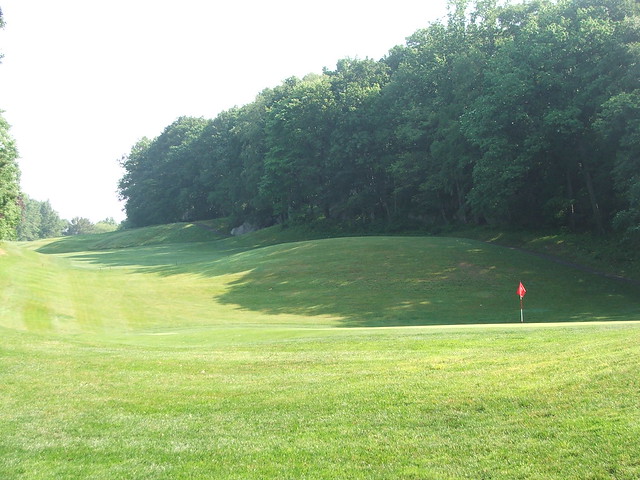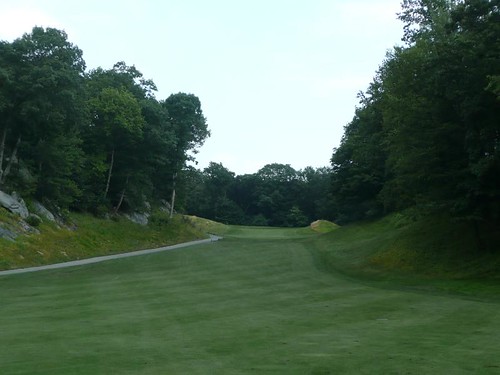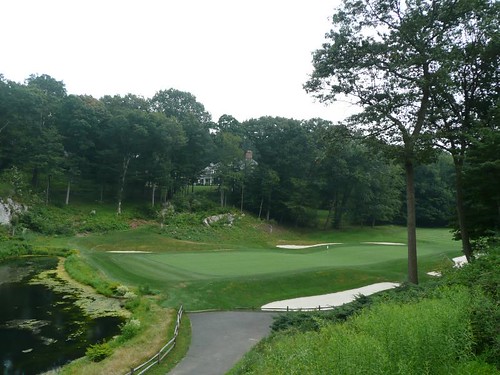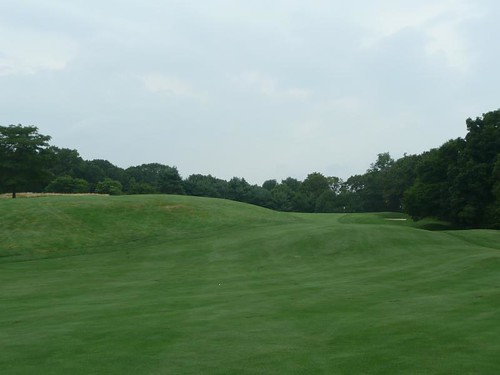
Aside from Muirfield Village, Columbus has two other distinctions: It is the home of Ohio State University, and the horror film The Silence of the Lambs was filmed nearby. The film features Anthony Hopkins as Dr. Hannibal Lecter, a brilliant psychiatrist and cannibalistic serial killer who is incarcerated. I can't prove that the movie's producers chose to shoot near Columbus because of Muirfield Village, but they certainly may have. I think the movie is an apt metaphor for the course since I was often in jail and at times the course seemed to eat me alive.

The first thing that struck me when seeing Muirfield Village is that it looks like Augusta. I have seen the course on TV and, just like Augusta, which I have walked several times, the terrain is much more dramatic in person. Muirfield Village is a very hilly course. One of the key design principles of Muirfield Village is that most shots play downhill. Jack's design philosophy about the course: "I believe golf is a much better game played downhill than uphill." You drive from elevated tee boxes or into a valley on the vast majority of holes, and your second shot is uphill only a handful of times. You can see the downhill terrain in this photo below looking back from the fourteenth green.

The downhill fourteenth hole looking back from the green
The par five 5th looking toward the green with fairways left and right
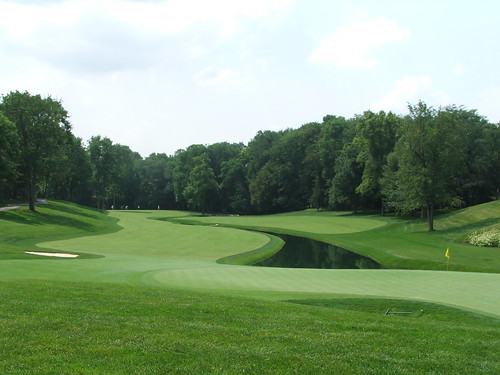
The fifth hole looking back from above
The fifth hole looking back from the green
The conditioning of Muirfield Village is lush. The club history goes to great pains to say it was not modelled after Augusta, but I'm not so sure. The routing, use of water, hilly terrain and greens are similar to Augusta. Also, the par three 12th hole looks a lot like the par three 12th at Augusta, requiring a tee shot to be hit over a pond to a similar green. It is also hard not to think that Deer Creek is the substitute for Augusta's Rae's Creek. The greens generally were in excellent shape and were fast, although they are not the defining characteristic of the course; the hilly terrain and snaking creek is. Many of the greens are set at an angle to the fairway and have water in front of them, requiring precise control on both distance and location.
The 412 yard par four ninth is typical of the par fours at Muirfield Village. It plays from an elevated tee box, downhill (sound familiar). The fairway slopes hard from the right to the left and there are many uneven lies. Your approach shot has to be hit crisply from an uneven lie. If you are over the green, you will be faced with a penal downhill sand shot to a green sloping back to front and toward the water. This is a common design element at Muirfield Village.
The world-class par five 11th from the fairway
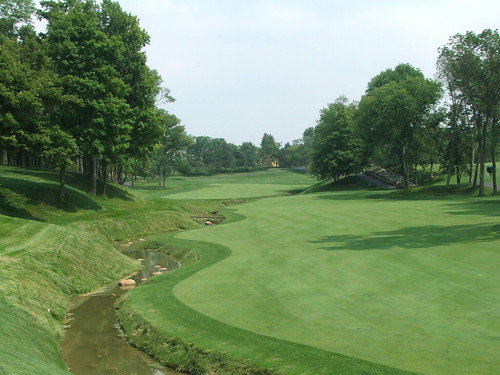
Deer Creek snaking through the 11th hole with its split fairways
Although his courses in general, and Muirfield Village specifically, are hard, I am not in the Nicklaus-design hating camp. I do find many of his resort courses unappealing and too difficult. However, I am a fan of his Mayacama course in Sonoma, California and of Cabo del Sol in Mexico as well as his co-design with Tom Doak of Sebonack on Long Island. I would make a distinction between Muirfield Village being very difficult, and thus hard for a mid-to-high handicapper to play, and the course not being good. It is a good course, has an interesting routing, is in superb condition and has excellent greens. I just wish I wasn't in the slammer my entire time there. Aside from all the other difficulties, there is a big penalty for being off the fairway, as the rough is tough and the ball nestles down into it.
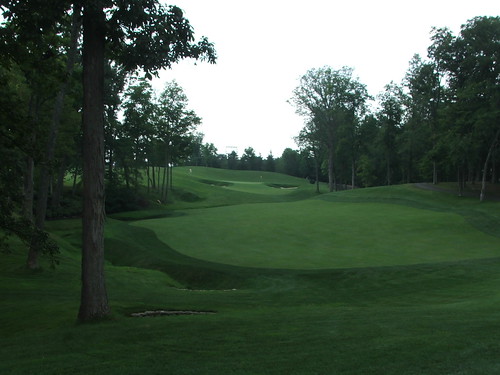
Par five 15th hole playing through a narrow valley
In my view, Muirfield Village deserves to be ranked in the top 100 because it has the best collection of par five holes I have ever seen. It will be Nicklaus's legacy and as such should be treated with respect. He's probably not the first of golf's historical figures I would want to have a beer with, but you have to respect everything he has done for the game. If I may digress, those I would love to have a beer with, in order, are Walter Hagen, Bobby Jones, Tiger Woods, Arnold Palmer and Ernie Els. The ultimate prize, however, would be to have a couple of scotches with Colin Montgomerie because, in keeping with today's theme, he is a psycho. You'd probably have to block out a day and a half to just sit and listen if you just ask him, "Colin, tell me a couple of stories where you argued with people for putting you off your game." I can't wait for next year's Ryder Cup with Monty as captain.
For Columbus, Ohio especially, Muirfield Village is quite formal. There is a guard gate at the entrance like at Pine Valley, and if your name is on the clipboard you are buzzed through the gate. After you drive up to the clubhouse an entourage comes out and greets you by name, and they valet park your car, which is very nice. The people and service at Muirfield Village are first class all the way, and they manage to make you feel at home. They change the spikes in your golf shoes to new spikes to protect their greens, and there is an attention to detail that's 'kinda hokey in a midwestern 'sorta way, but makes a difference. Their wine list is excellent and they have a large selection of Chiantis.
Nicklaus on Muirfield Village, "Certainly it's a tough, tough golf course. But it's a fair test." To keep this comment in context, it is a fair test of golf the same way that swimming from Alcatraz Island to San Francisco is a fair test for a swimmer.
From the back tees, the course plays 7,366 yards and has a slope rating of 149. Be prepared for a stern test of golf if you ever play Muirfield Village and make sure you don't play it by yourself. Go with somebody to lessen your chances of being eaten alive. There's safety in numbers.
